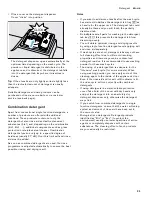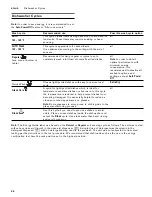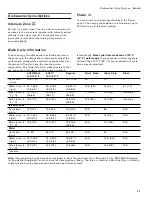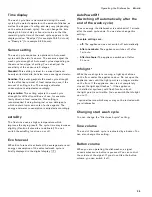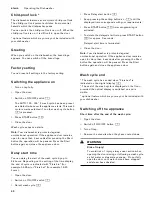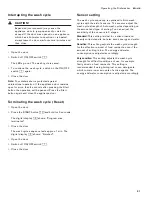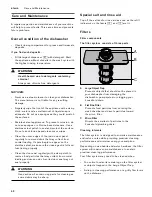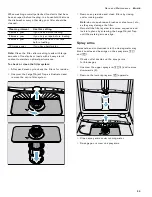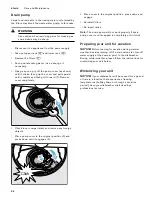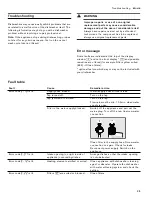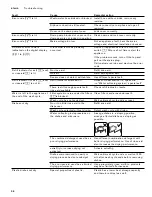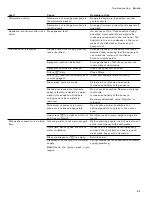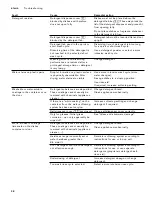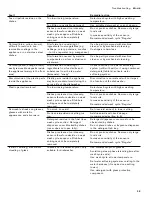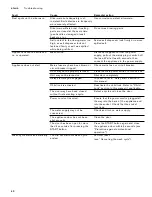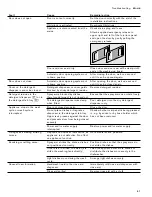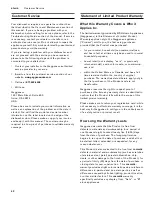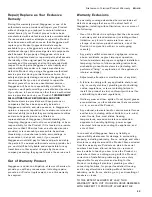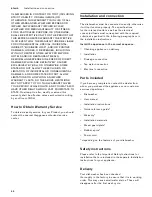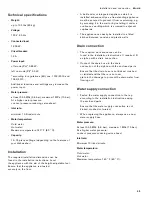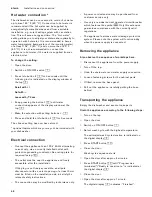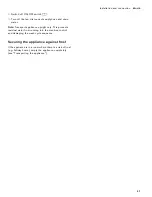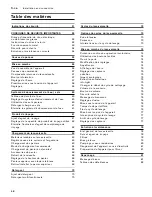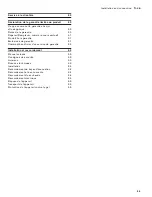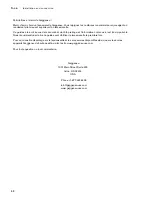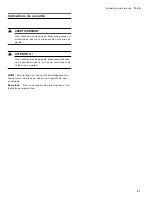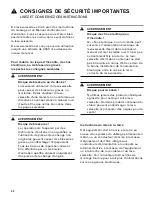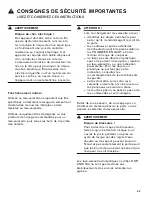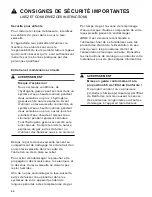
39
Troubleshooting
en-us
Tea or lipstick residue on the
dishes.
Too low rinsing temperature.
Select wash cycle with higher washing
temperature.
Too little or unsuitable detergent.
Use suitable detergent at correct dosage.
Dishes precleaned too intensely;
sensors therefore decide on weak
wash cycle sequence. Stubborn
soiling cannot be completely
removed.
Do not prerinse dishes. Remove only large
food soils.
Increase sensitivity of the sensors.
Recommended wash cycle "Regular"
Colored (blue, yellow, brown),
difficult to remove to non-
removable coatings in the
appliance or on stainless steel
dishes.
Film formation consisting of
ingredients from vegetables (e.g.
cabbage, celery, potatoes, noodles,
...) or the tap water (e.g. manganese).
Can be partly removed with machine
cleaner or by mechanical cleaning.
Coatings are harmless.
Film formation caused by metallic
components on silver or aluminum
silverware.
Can be partly removed with machine
cleaner or by mechanical cleaning.
Colored (yellow, orange, brown),
easily removable deposits inside
the appliance (mainly in the floor
area)
Film formation consisting of
ingredients from food soils and
substances from the tap water
(limescale), “soapy”
Check function of the water softening
system (refill with salt) or, if using combined
detergents (tablets), activate water
softening system.
Discoloration of the plastic parts
inside the appliance.
Plastic parts inside the appliance
may become discolored during the
service life of the dishwasher.
Discoloration is normal and will not impair
the function of the dishwasher.
Plastic parts discolored.
Too low rinsing temperature.
Select wash cycle with higher washing
temperature.
Dishes precleaned too intensely;
sensors therefore decide on weak
wash cycle sequence. Stubborn
soiling cannot be completely
removed.
Do not prerinse dishes. Remove only large
food soils.
Increase sensitivity of the sensors.
Recommended wash cycle "Regular"
Removable streaks on glasses,
glasses with metallic
appearance and silverware.
Too much rinse aid.
Set rinse aid amount to lower setting.
No rinse aid added or setting too
low.
Add rinse aid and check dosage
(recommended setting 4–5).
Detergent residue in the final rinse
wash cycle section. Detergent
dispenser cover blocked by dishes
(cover does not open fully).
Detergent dispenser cover must not be
obstructed by dishes.
Do not place dishes or fragrance dispenser
in the detergent tab tray.
Dishes precleaned too intensely;
sensors therefore decide on weak
wash cycle sequence. Stubborn
soiling cannot be completely
removed.
Do not prerinse dishes. Remove only large
food soils.
Increase sensitivity of the sensors.
Recommended wash cycle “Regular”
Initial or existing, irreversible
clouding of glass.
Glasses not dishwasher-proof, only
suitable for dishwasher.
Use dishwasher-proof glasses.
Avoid long steam phase (standing time after
wash cycle ends).
Use wash cycle at lower temperature.
Set water softening system according to the
water hardness (if required one setting
lower).
Use detergent with glass protection
component.
Fault
Cause
Remedial action

